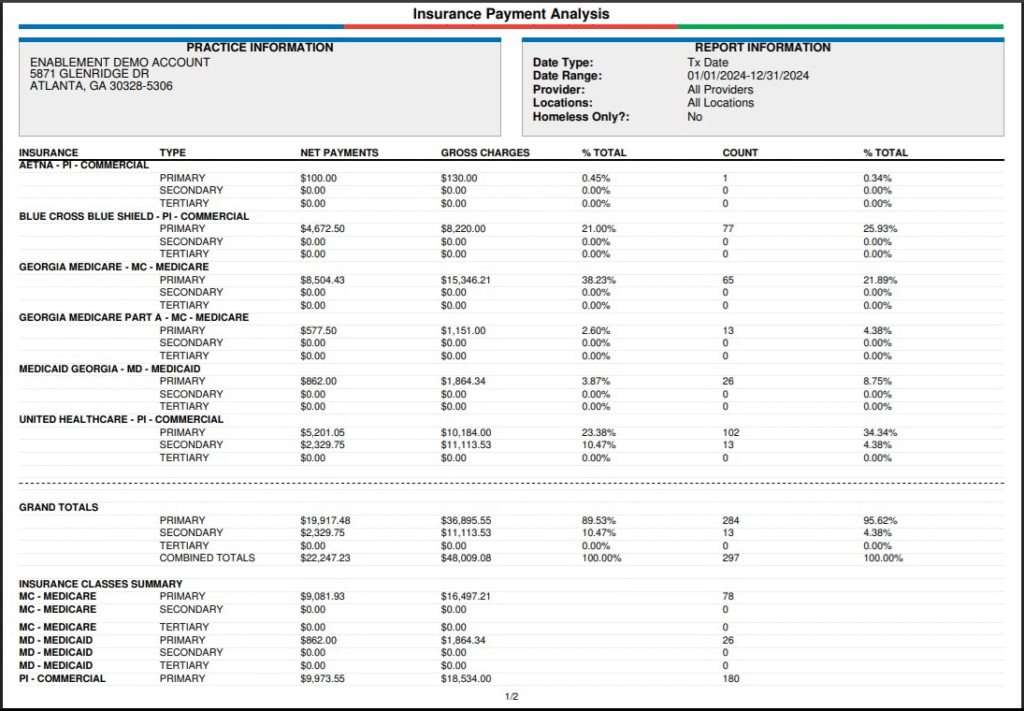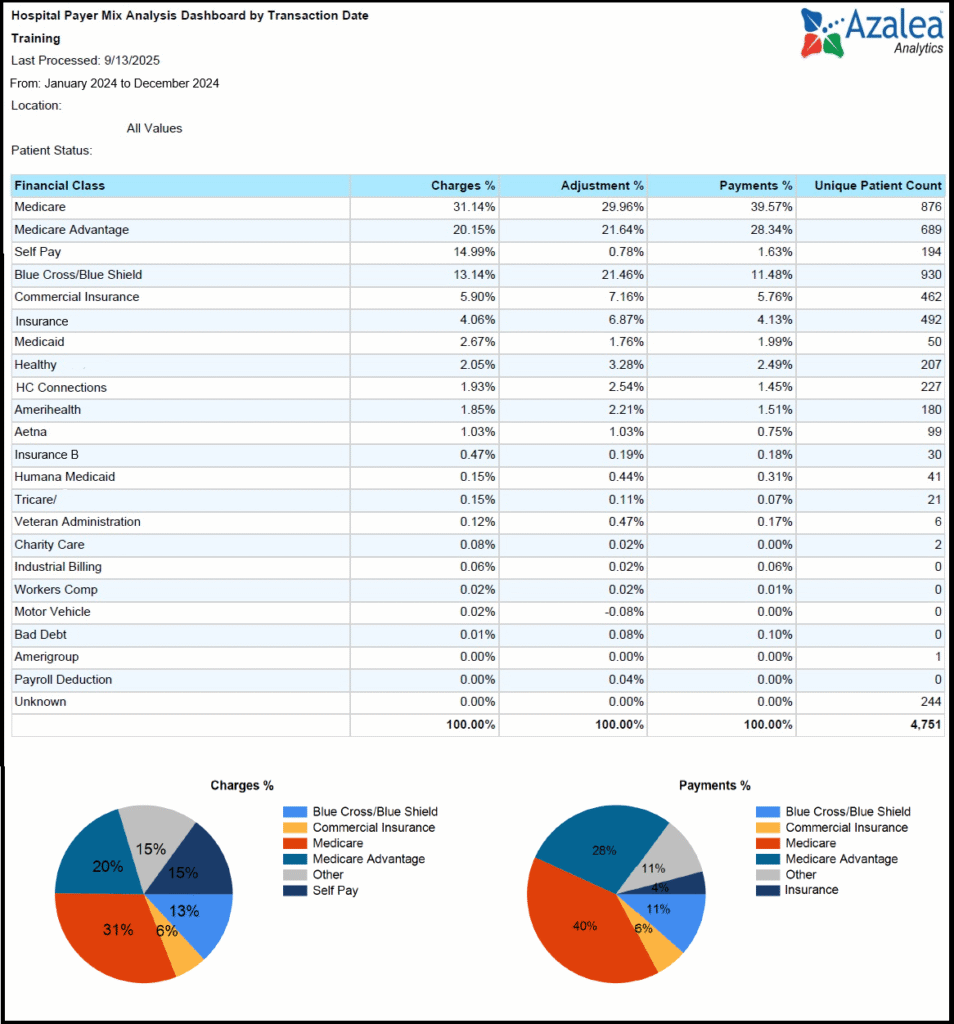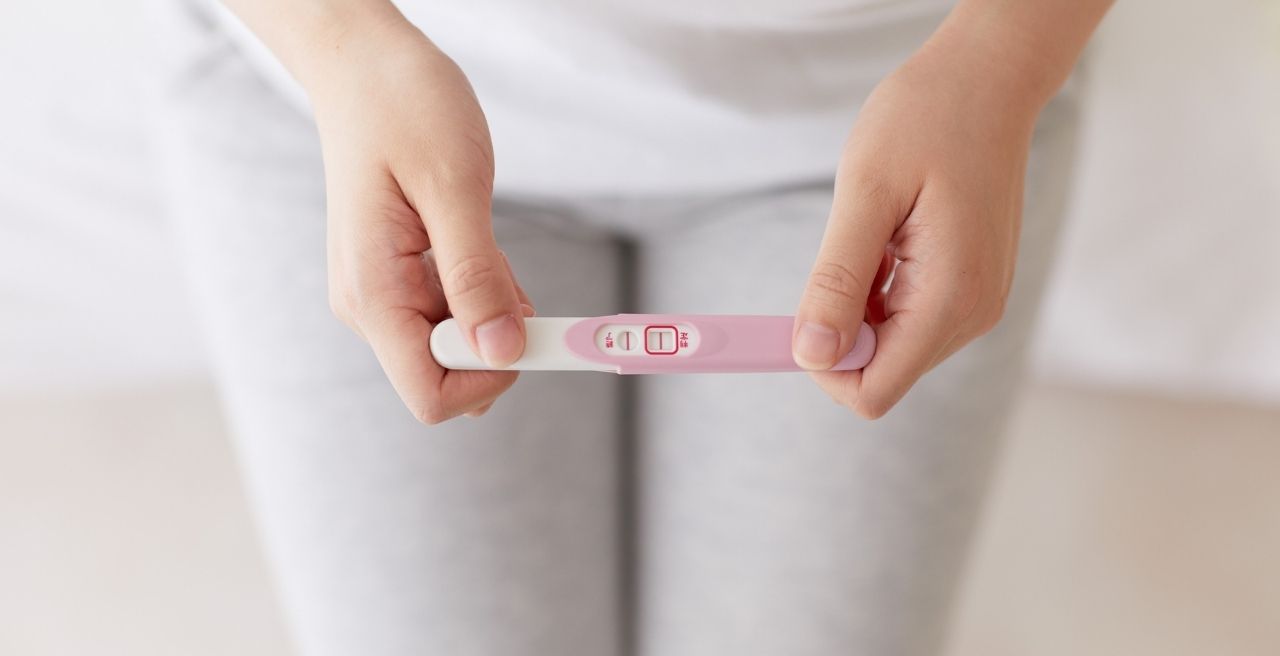How to Do a Payer Mix Healthcare Analysis to Prepare for OBBBA Impacts
The One Big Beautiful Bill Act (OBBBA) is bringing a lot of changes to Medicaid coverage in the U.S. One good way for rural health clinics and hospitals to prepare is to do a payer mix healthcare analysis to better understand how changes to their Medicaid payer mix will affect them directly.
Why Knowing Your Medicaid Payer Mix Matters
Provisions in the OBBBA could result in up to 12 million people losing health insurance coverage by 2034.1 The impacts will mostly affect people who rely on Medicaid and Affordable Care Act (ACA) plans.
In rural areas 23% of residents, or some 2.7 million people, depend on Medicaid coverage.2, 3 And a portion of those 2.7 million rural residents could be without coverage by 2034. Estimates are that rural hospitals rely on Medicaid for roughly 20% of revenues.4
OBBBA impacts won’t take that full 20% of revenues away, but it will potentially impact your financial health and leave patients without coverage who will then potentially become self-pay patients or charity care.
How to Analyze Your Medicaid Payer Mix
To estimate how changes in Medicaid coverage might affect your practice, start by calculating the percentage of patient visits and reimbursements that come from Medicaid payers. This will give you a sense of potential revenue loss and help you plan ahead for any decrease in patient volume.
There are a few ways to run reports to find your Medicaid payer mix:
- Running transaction or payer mix reports in most EHR systems
- Using the built-in Insurance Payment Analysis report in Azalea EHR
- Using the built-in Payer Mix Analysis Dashboards in Azalea Analytics
How to Do a Manual Payer Mix Healthcare Analysis
Your EHR can give you your Medicaid payer mix, but it won’t show how the OBBBA’s changes to Medicaid coverage could affect your revenue.
To bridge that gap, you can download and use a complementary payer mix calculator (an Excel sheet). Simply enter your Medicaid payer mix data from your EHR, and based on a few assumptions that you can edit, you can use the calculator to estimate how OBBBA may impact your revenue. Find instructions for using the payer mix healthcare calculator (see the video below).
Here are the steps to follow to gather your payer mix data and use the payer mix calculator.
- Run your payer mix or transaction reports.
If your EHR doesn’t have a payer mix report, run a transaction report broken out by the payer group. - Track your key data points.
Tally visit volumes, charges, and payments for all of 2024. This gives you a full year of data. - Group your results.
Organize the totals into payer categories, such as Medicare, Medicaid, commercial insurance, workers’ comp, and others. - Determine Medicaid dependence.
Calculate what percentage of your total visits and revenue come from just Medicaid. For example, Medicaid might account for 35% of visits but only 25% of revenue, since reimbursements are typically lower than commercial payers. - Model potential coverage losses.
Enter your data into the payer mix calculator. This will give you estimates of how OBBBA’s Medicaid changes could affect your revenue. (see
If you use the calculator and say model a loss of 12% of your Medicaid payer mix patients between today and 2034, and see 1,000 Medicaid patients a year, you’ll see a loss of 120 fewer visits reimbursed by Medicaid. If you multiply 120 by your average revenue per Medicaid visit, you have an estimate of your potential annual revenue losses due to the OBBBA’s impacts on Medicaid.
Every hospital and clinic’s revenue for Medicaid visits is different. But as an example, say your average is $200. At 120 fewer visits, you could be looking at a Medicaid revenue loss of $24,000 annually.
About Estimating Potential Medicaid Coverage Losses
No one knows or has shared a projected specific percentage of Medicaid recipients who might lose coverage under the OBBBA. Different analyses project varying levels of coverage losses. If potential losses assume a percent of the 78.1 millions people estimated to be on Medicaid in May 2025, it’s possible anywhere from 7% to 15.5% of Medicaid recipients could lose coverage by 2034.5
In the calculator, you might run scenarios at 7%, 11.25%, and 15.5% to get a sense of best-, average-, and worst-case possibilities.
How to Find Your Medicaid Payer Mix in Your EHR
Your EHR should let you pull a payer mix report. In Azalea Health hospital EHR or ambulatory EHR solutions, you can access your payer mix by running the Clinic Statistical or Insurance Payment Analysis reports. You can also use the Payer Mix Analysis Dashboard if you’re using Azalea Analytics with your Azalea EHR.

How to Use Azalea Analytics to Do a Payer Mix Healthcare Analysis
If you’re using Azalea Analytics, you can get your payer mix and deeper analysis of how your payer mix might be shifting over time using the Payer Mix Analysis Dashboards.

When running possibilities in the payer mix calculator, you might put your highest and lowest Medicaid payer mixes over time to see potential best- and worst-case scenarios or find an average in the payer mix calculator.
Other Important Information to Gather
A reduction in the number of patients with Medicaid may have a significant impact on hospitals and clinics nationwide, especially rural those in rural areas. But it won’t be the only impact.
Changes to provider taxes and state directed payments (SDPs) amounts may also impact your Medicaid funding. It’s recommended that you quantify your potential decrease in provider tax/state directed payments (SDPs) amounts, where applicable, between fiscal year 2028 and 2032. Learn more about provider tax and SDP changes in One Big Beautiful Bill Next Steps for Rural Healthcare.
Next Steps
States have to submit RHT Program applications by November 5, 2025. Be sure to share what you discover about the OBBBA’s impact on your hospital or clinic with your state’s leadership as soon as possible. That way they’ll know the gaps you might experience and be able to include those in their RHT Program plan and application.
You may also want to review and update your charity care policy once you determine your payer mix.
For ideas on steps to take to navigate the impacts of the OBBBA, watch the Azalea How to Mitigate OBBBA Impacts webinar.
Sources
1 NASHP, What Health Care Provisions of the One Big Beautiful Bill Act Mean for States, Jul. 8, 2025, https://nashp.org/what-health-care-provisions-of-the-one-big-beautiful-bill-act-mean-for-states/
2 GAO, Why Health Care Is Harder to Access in Rural America, May 16, 2023, https://www.gao.gov/blog/why-health-care-harder-access-rural-america
3 Assuming a rural population of 60 million, 23% of whom rely on Medicaid, which equals 2.7 million people.
4 AFT, How Medicaid cuts threaten rural healthcare, Mar. 28 2025, https://www.aft.org/news/how-medicaid-cuts-threaten-rural-healthcare
5 KFF, Medicaid Enrollment and Unwinding Tracker, Sept. 4, 2025, https://www.kff.org/medicaid/medicaid-enrollment-and-unwinding-tracker
About the Author
![]()
Sign up for emails and never miss an update! →
Want more like this?
Get our emails and never miss an update! →





